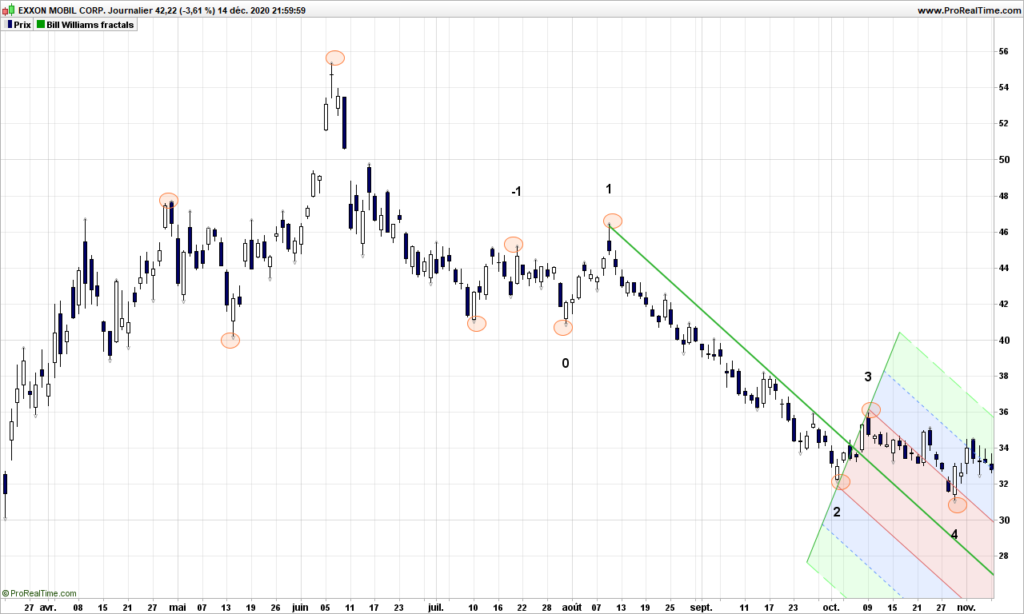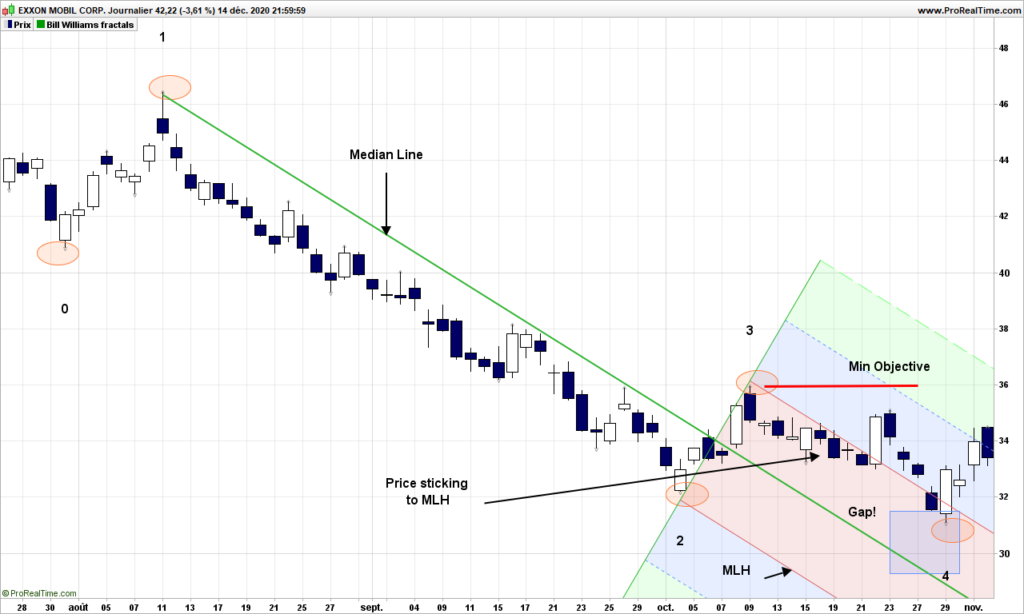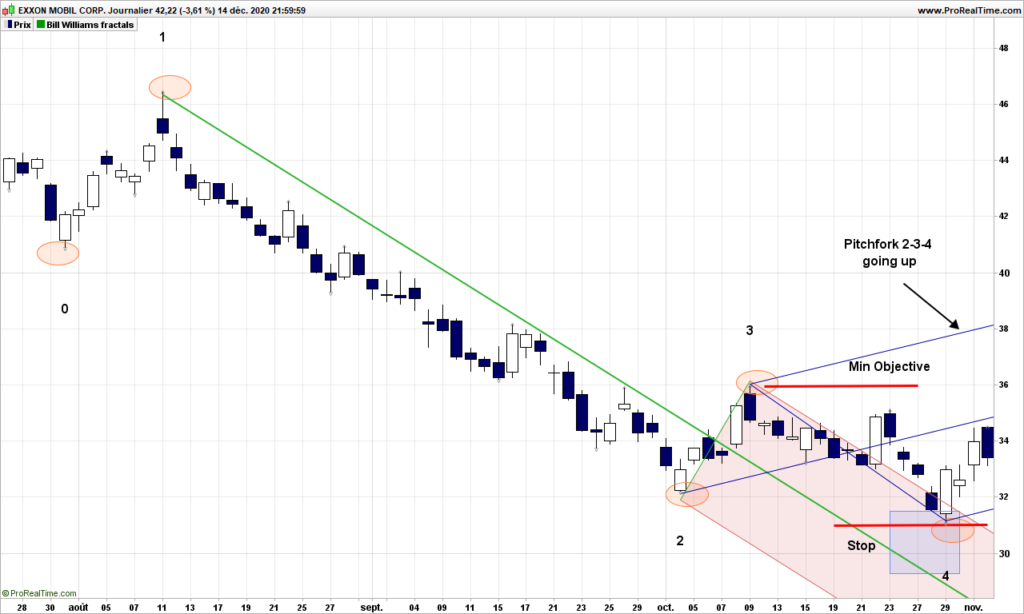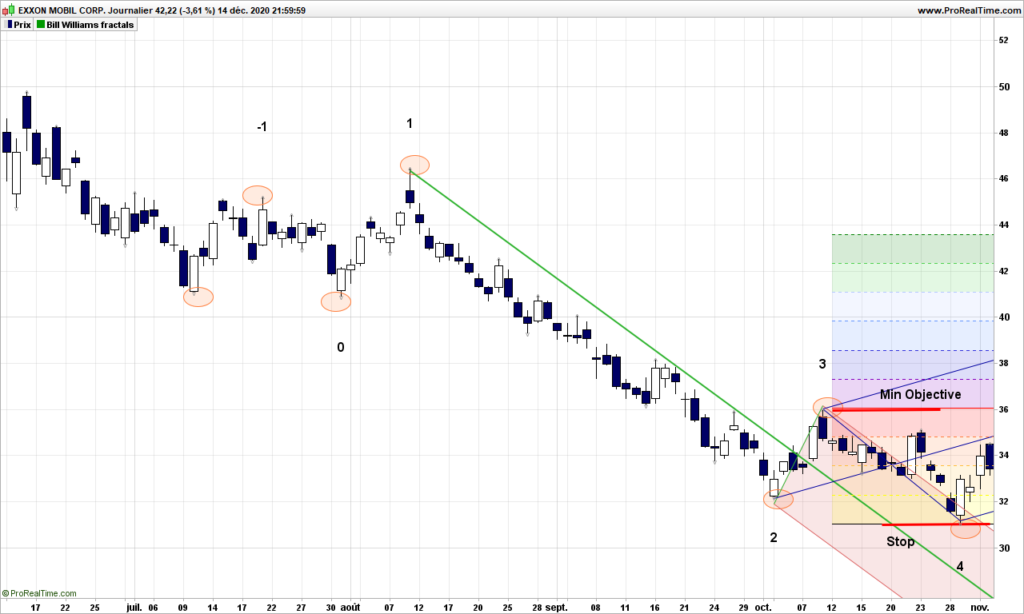In part 1, you have learned how to identify key market turning points, which we have called Swing Point, shortened to SP. Swing points follow peaks and troughs in alternative way. Then we looked at short term and medium term SP’s. The last one are the ones we are interested in for drawing pitchforks.
Of course, the first question is why drawing pitchforks? Pitchfork is an interesting tool in the sense that is allows to identify trend in easy and blunt manner, no discussion is needed; then it gives buy and sell signal; it also measures the volatility! In short a dream tool, this is my Christmas gift to readers, but mastering will require some practice!

We are going to play with Exxon Mobil today. On the following graph, I have indicated the medium term swing points. Again take time to practice a bit here, because then it becomes (relatively) more difficult.

We are going now to number the SP’s, starting from the right of the graph, and in backward direction from 4:

Tough, isn’t it? Then your charting software should have a pitchfork tool. Select it and select the swing pints 1, 2 and 3. You should get something like that:

I am not going to explain the geometry used to draw the pitchfork, there are plenty of sites that do this. Let’s zoom instead on price action:

The green light is the median line, the red ones are the MLH (acronyms defined by doctor Andrew), are parallel to median line. After SP3, you notice that prices seem to adhere to the upper MLH, that is a sign of strength! At point 4, you can easily observe that price have not touched the median line, there is a gap between SP4 and median line, this is an other sign of strength and, according to A. Andrew, the minimum price objective for this situation is the price at SP3! The pitchfork is down trending and price have already exited the pitchfork even before SP4: this is the buy signal! We are all set up. We need to verify one last thing, the pitchfork made on SP’s 2, 3 and 4 should be trending up! Let’s draw:

Everything is perfect. We will look in future post the rules and how to find out where prices might be going, but let’s use for now the minimum price objective, so you need to place an order with stop at SP4 and objective at SP3, meeting your gain / risk sensitivity.

How did the trade go?

The min objective was reached only a few days later, then price has gone up since, landing currently a cool 33% at the time of writing!
This was your first pitchfork trade. Next time, we will look at the major rules to use pitchforks in safe and efficient manner.
Until next time, trade safely!


appreciate it a great deal this site is elegant as
well as casual
What a material of un-ambiguity and preserveness of valuable knowledge
concerning unpredicted feelings.